
Clathrin and Stomatal Function
Blog, Plant Physiology, Plant Physiology: On The Inside, Research, Research BlogVesicle traffic to and from the plasma membrane plays an integral role in regulating protein localization and activity, membrane composition, and cell surface area. Clathrin is a structural protein that forms a lattice-like complex composed of two H chain subunits (CHC1 and CHC2) and two light chain…
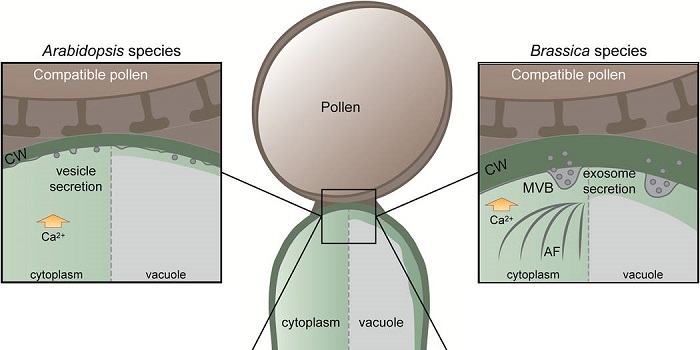
Review: Exocyst, exosomes, and autophagy in pollen-stigma interactions ($)
Blog, Plant Science Research Weekly, Research, Research BlogSome plants are able to suppress inbreeding through a system called self-incompatibility, in which “self”-pollen is unable to reach “self” eggs. Self-incompatibility has evolved multiple times and takes several forms. Goring reviews the cellular processes of self-incompatibility that occur in…

Review: The structure-to-function missing link of plasmodesmata: ($)
Blog, Plant Science Research Weekly, Research, Research BlogPlasmodesmata are tiny channels between cells that allow intercellular movement of messages and metabolites as well as pathogens. They are structurally complex and usually have a central strand of endoplasmic-reticulum (the desmotubule) that passes between adjacent cells, connected by spoke-like elements…
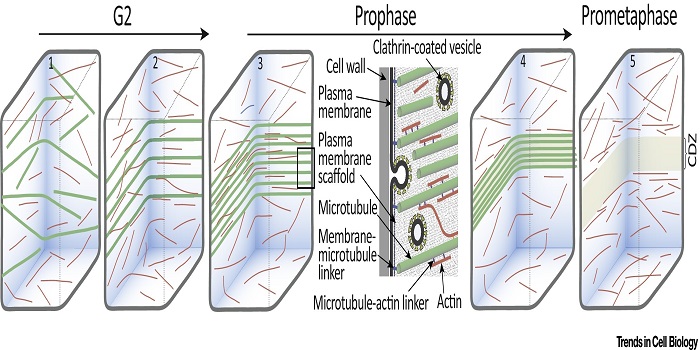
Opinion: Plant cytokinesis: Terminology for structures and processes
Blog, Plant Science Research Weekly, Research, Research BlogCell division in plants is a structurally beautiful process that involves striking and dynamic changes in the cytoskeleton, endomembranes, and nucleus. However, as authors Smertenko et al. observe, “Current plant cytokinesis terminology was developed using data generated by fluorescence microscopy…

A pair of papers that redefines the pyrenoid, the eukaryotic CO2-concentrating organelle
Blog, Plant Science Research Weekly, Research, Research BlogPhotosynthesis in aquatic organisms is made difficult due to the low solubility of CO2 in water. Algae such as Chlamydomonas rheinhardtii overcome this limitation through a carbon-concentrating organelle called a pyrenoid. Two papers in Cell redefine our understanding of the pyrenoid structure. Mackinder…
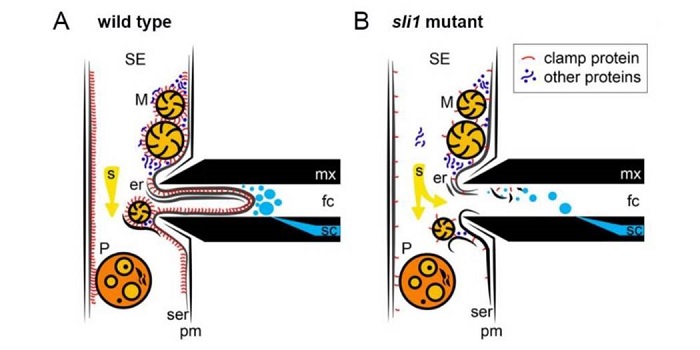
SIEVE ELEMENT-LINING CHAPERONE 1 restricts aphid feeding on Arabidopsis during heat stress ($)
Blog, Plant Science Research Weekly, Research, Research BlogAphids are major pests that damage plants by sucking out phloem sap and as by acting as vectors in transmission of more than 300 different viruses. Kloth et al. used a high-throughput method involving video-tracking of aphid behavior on leaf discs to score 350 Arabidopsis accessions for aphid resistance.…
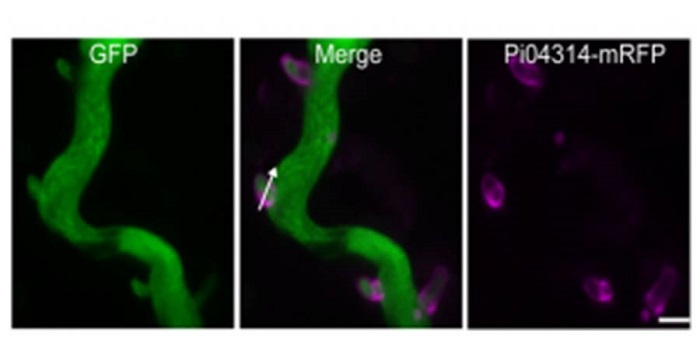
Tracking effector delivery in Irish famine potato pathogen
Blog, Plant Science Research Weekly, Research, Research BlogPathogenic microbes interfere with the host cellular and physiological processes to promote infection. This interaction is monitored by pathogen molecules called effectors that either act in intercellular space or enter the host cells. Mechanisms underlying the uptake of these effectors are not fully…

Special delivery: An independent secretion pathway for the delivery of cytoplasmic pathogen effectors
Blog, Plant Science Research Weekly, Research, Research BlogPathogenic microbes manipulate host plants by secreting effector molecules that interfere with immunity. Bacterial phytopathogens achieve this using specialized secretion apparatuses that act as molecular ‘hypodermic needles’ to inject effector proteins directly into plant cells. In comparison, effector…
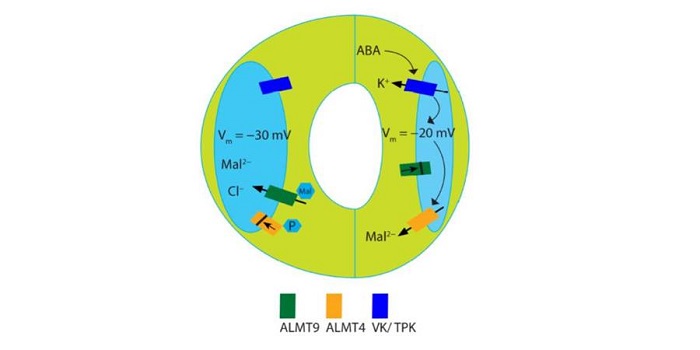
ABA-induced stomatal closure involves ALMT4, a phosphorylation-dependent vacuolar anion channel
Blog, Plant Science Research Weekly, Research, Research BlogChanges in guard cell turgor pressure result in stomatal opening and closing, balancing CO2 uptake with transpiration. These dynamics have been studied as early as the 1800s and much knowledge has been gained regarding the components involved in this process, yet we are still far from a unified model…

